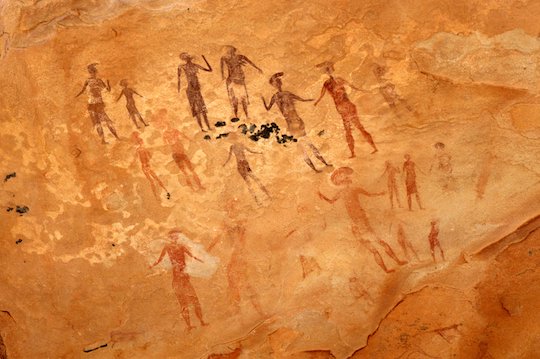Tassili is a plateau found in the southeast area of Algeria. Here you can find a collection of red and black rocks located in the heart of the Sahara desert. This was declared a World Heritage Site in 1982 and is known as Tassilin’Ajjer. There is great interest in this site because of its archaeological remains and its natural value as there are cypress forests located here. The entirety of the place is classified as a National Park, Biosphere Reserve and natural and cultural property of the World Heritage of Humanity.
These rocks are one of the most important and rich representations of rock art in the world, with more than 15.000 paintings and cave engravings from the Upper Palaeolithic and the Neolithic, dating to 8.000 years ago.
Various studies and research done on Tassili’s paintings indicate that two different groups of people produced the paintings. One was from Central Africa, and a second was from the coast of Algeria. The second group were said whose to have a clearer skin tone than the first. Both people artistically captured the customs carried out in that region and the evolution of fauna and agriculture.
In those times coinciding with end of the glaciation period, Tassili was the most livable and suitable place for the development and survival of human beings, agriculture and livestock.The varieties depicted by the paintings are presumably the Olive Tree of Laperrinei (European Olea subspecies of Laperrinei), which is the African variant of the common olive tree. This pictorial data gives us evidence that by then human beings ceased to be nomadic. At this time, they started to create settlements in which they began to domesticate animals, and even come into contact with olive trees and olive oil, which had a significant impact on their way of life. Thus, once again, the ancestral olive tree was witness to impactful changes of behavior manifested by human beings throughout history. As the still-popular saying goes, «olive trees know more about human beings than man knows about olive trees.«

